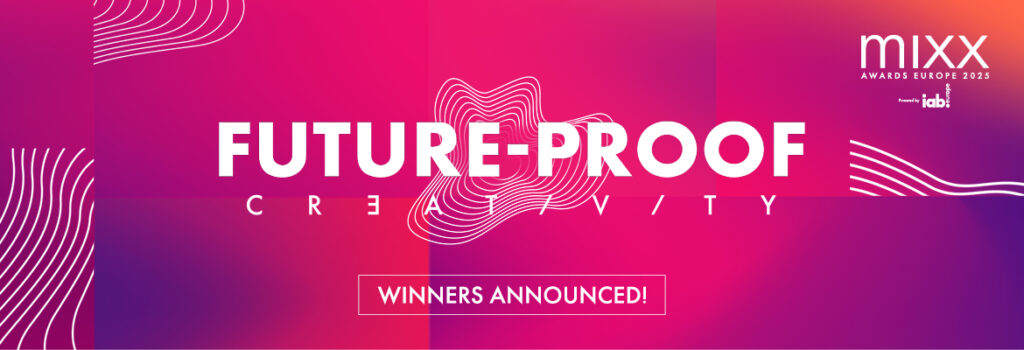17th December 2025, Brussels, Belgium - IAB Europe, the leading association for the digital advertising and marketing industry, has today released Beyond Reach: Mapping the Social Impact of Digital Advertising and Media. This first-of-its-kind report examines how the digital advertising ecosystem currently addresses social sustainability, which social impacts are in scope, and how emerging approaches attempt to measure and manage them across Europe and beyond.
While recent industry attention has focused heavily on the environmental footprint of digital advertising, particularly carbon emissions, this report highlights a critical blind spot: the social impacts of media investment remain largely unmeasured, unstandardised, and undervalued.
Developed by IAB Europe’s Sustainability Standards Committee, and drawing on submissions to a multi-stakeholder Request for Information, a structured mapping of emerging initiatives, and expert interviews, the report provides the clearest picture yet of how the industry is beginning to address social topics such as media plurality, misinformation, accessibility, and diversity across the media supply chain.
Key findings reveal:
Commenting on the findings of the report, IAB Europe’s Data Analyst & Sustainability Lead, Dimitris Beis, said, “The exercise aims to surface areas where the relationship between digital advertising and social considerations has been highlighted by the ecosystem. Social sustainability is broad by definition, and understanding the focus, goals, and limitations of existing projects is key to supporting meaningful progress.”
Steffen Hubert, Director of External Affairs & Sustainability, Seven.One Entertainment Group, representing BVDW & Chair of IAB Europe's Sustainability Standards Committee, also said, “With the Beyond Reach Report, we have laid the groundwork for a shared language on social impact in digital advertising that is aligned with today’s digital realities, ethical standards and social expectations. The next step is to turn this map into interoperable KPIs and simple governance tools, so that public value, risks and opportunities become more visible in everyday media decisions, not only in high-level policy debates.”
You can download a copy of the report on the IAB Europe website here.
The findings and gaps identified in the report will directly inform the Sustainability Standards Committee’s work on social impact in the year ahead, helping to guide the development of practical guidance and collaborative actions for the industry.
For more information on IAB Europe’s sustainability standards work, visit the Sustainability Hub here.

Sponsored by MediaMarktSaturn, the latest series of our Retail Media Roundtable podcast mini-series was recorded live at our Retail Media Impact Summit in Amsterdam!
You can catch up on all of the episodes below:
Episode 1: How Brands Can Win with Data-Driven Campaigns

Episode 2: Celebrating Certification & How it Powers the Future of Retail Media

Episode 3: Where Entertainment Meets Retail Media

Episode 4: Clean Rooms & Commerce Media: The Next Frontier in Measurement

Episode 5: How to Build an Omnichannel Retail Media Network from Scratch

Episode 6: How AI Is Reshaping Strategy, Measurement & Shopper Experience

Episode 7: How Data is the Difference between DOOH and In-Store Retail Media

Episode 8: Building an Off-Site Retail Media Strategy That Works

Episode 9: Unlocking the In-Store Retail Media Ecosystem & Driving Incremental Revenue

Episode 10: Onsite + Offsite, One Brain

On 24th September, over 150 senior European leaders in Retail Media gathered in the heart of Amsterdam for an intensive day of insights, action & collaboration.
The Summit wasn’t about flashy announcements; it was about meaningful conversation and collective momentum. Some of the core topics explored:
Beyond the formal sessions, the Summit also offered networking, breakout workshops, and plenty of space for spontaneous conversations and new partnerships.
Find out more in our wrap-up blog post here, and watch our highlight reel here.
The Transparency and Consent Framework (TCF) Version 2.3 was released on 19th June 2025, marking a significant advancement for resolving signalling ambiguity regarding Vendors’ disclosures. TCF v2.3 is already available, supported by updated specifications, implementation guidelines and the TCF Type Script Library iabtcf-es maintained by IAB Tech Lab. We recommend that TCF participants prepare, as the transition period is fast approaching and concludes on 28th February 2026.
Vendors may face uncertainty in specific scenarios where it’s unclear whether they were disclosed to the user.
This distinction is especially important when a vendor intends to process data for Special Purposes under Legitimate Interest (LI) but cannot infer from the signals contained in the TC String whether they were disclosed in the CMP UI to the user.
Although the signalling ambiguity has already been solved for Vendors that solely declare Special Purposes (see 2021 notification here), it had not been solved yet for Vendors that declare both Special Purpose(s) and Purpose(s) under LI.
Under 2.2, Vendors with such declarations could not distinguish between not having been disclosed in the CMP UI and the user having exercised their right to object when the LI bit for their Vendor IDs in the Vendor Legitimate Interest Section is set to 0. They therefore faced uncertainty as to whether they had established a legal basis for processing data in pursuit of Special Purposes under LI - which cannot be objected to within the Framework.
2.3 makes the previously optional disclosedVendors segment mandatory in order to resolve the ambiguity around the representation of LI in the TC string. This enhancement ensures that Vendors can always determine whether they were disclosed in the CMP UI.
For CMPs: CMPs must update their live installations to include the disclosedVendors segment in the TC String. As previously communicated, CMPs should not be required to re-surface the UI to accommodate this change.
CMPs that already made use of the previously optional disclosedVendors segment or kept record of which Vendors were disclosed at the time TC Strings were initially created may update existing TC Strings (please note that the lastUpdated field should not be changed in such a case).
However, CMPs that did not keep a record of which Vendors were disclosed at the time the TC String was initially created should wait for users to renew and/or change the choices they previously made to create a TC String that includes the disclosedVendors segment.
For Vendors: Vendors affected by the signalling ambiguity may already support the disclosedVendors segment as soon as they begin receiving TC Strings that include it.
Post 28 February 2026, all Vendors affected by the signalling ambiguity must recognise and act on the disclosedVendors segment appropriately.
Vendors must verify the bit for their Vendor ID in the disclosedVendors segment, where a 1 indicates they were disclosed, and a 0 indicates they were not disclosed, in order to determine whether they can process data in pursuit of Special Purposes.
Vendors that only declare Special Purposes shall also rely on the disclosedVendors segment to determine if the CMP has established transparency on their behalf instead of relying on the LI bit for their Vendor IDs in the Vendor Legitimate Interest Section.
For Publishers: Publishers that make use of a commercial CMP should not be affected by the transition, as there is no re-surfacing requirement associated with this update. Publishers operating their private CMP should refer to the corresponding guidance.
The TC String structure requires the mandatory Core String to precede all other segments, followed by the disclosedVendors and PublisherTC segments. Because both the disclosedVendors and PublisherTC segments include unique Segment IDs for identification, they may appear in any order after the Core String.
The transition period concludes on 28th February, 2026.
Starting 1st March, 2026:
For any questions about TCF 2.3, please reach out to tcf.compliance [at] iabeurope.eu.
Since launching our newly formed Advertising & Media Committee earlier this year, we have been focused on bringing together experts from across the digital advertising ecosystem to address the commercial and technological developments shaping our industry. As part of this committee, four specialised working groups were created: AI in Advertising, Addressability & Measurement, Connected TV, and Programmatic Advertising.
Today, we are delighted to introduce the new Co-Working Group Leads of the Artificial Intelligence (AI) in Advertising Working Group, who will help guide our efforts in supporting the industry as it navigates the rapid evolution of AI technologies. Their leadership will be instrumental in assessing emerging opportunities, addressing challenges, and ensuring that AI innovation continues to deliver value to all stakeholders.
We are pleased to welcome:

Tobias Kellner, Industry Lead, Google DACH

Katharina Jäger, Head of Innovation & Technology, BVDW
With extensive expertise in AI-driven innovation, advertising technology, and strategic transformation, they each bring a unique perspective that will help steer the group’s direction and advance meaningful dialogue in this space.
Of his newly appointed position, Tobias, said, "AI is no longer just a future concept; it is the engine currently reshaping how we create value in digital advertising. Navigating the rapid evolution of AI requires more than just individual innovation; it requires industry-wide collaboration. I am honored to lead this working group alongside Katharina at such a pivotal time. Our focus will be on harnessing this potential responsibly to drive real business results and industry advancement."
Katharina also commented on her role, saying, “As Co-Lead of the IAB Europe AI Working Group, I look forward to shaping the value-driven use of AI in digital advertising across Europe. The group plays a crucial role in providing guidance, aligning best practices, and building a shared European framework. I’m excited to support this work and help the industry leverage AI safely, transparently, and effectively.”
We look forward to working closely with them as they help shape the future of this important area of our industry.
We will be unveiling the newly appointed leads for our other Working Groups in the New Year, so keep an eye out for further updates.
For more information on the AI Working Group, Advertising & Media Committee, or the other Working Groups, and how to join, visit our website here or contact the team at communication [at] iabeurope.eu.
About Tobias Kellner
Tobias Kellner leads Google’s industry relations efforts with the German ads ecosystem, in particular its advertising trade bodies. This covers a wide range of topics, from business areas such as AI or privacy to regulatory perspectives and industry standards. Tobias previously held roles in sales and marketing for Google and worked for IBM. He holds various board roles, e.g. at the digital trade body BVDW on AI, or at Bitkom for digital marketing.
About Katharina Jäger
Katharina Jäger is the Head of Innovation & Technology at the German Association for the Digital Economy (BVDW). In this role, she focuses deeply on emerging technologies, their developments, and future trends. In addition to leading and coordinating projects and initiatives, she serves as an innovation driver and technology expert for the digital economy, the association, and its members.
Over the past week, we’ve published a three-part mini-series featuring insights from members of our Connected TV (CTV) Working Group. Together, these posts explore the challenges, opportunities, and emerging priorities shaping the future of CTV in 2026.
To make it easy to revisit the full set of perspectives, you’ll find links to all three blogs below:
A big thank you to all of our members who shared their expertise in this series.
If CTV is a priority for your organisation in the year ahead, now is the perfect time to engage with our work. You can visit our Knowledge Hub to explore more insights, or get in touch with Marie-Clare Puffett at puffett [at] iabeurope.eu to learn how you can participate in our CTV Working Group and share your expertise.
Welcome to the final part of our Connected TV (CTV) 2026 predictions series. Our CTV Working Group’s predictions spotlight both the challenges and opportunities shaping the future of CTV, and to dive deeper we’ve split this content into a mini-series. Across the week, we’ve been sharing perspectives from Working Group members to build a broader picture of where CTV is headed and what needs to happen next.
Today, we finalise the conversation with insights from the last set of voices in the Working Group.
Thank you to the following contributors for sharing their expertise in this instalment:

Todd Randak, GM CTV, DoubleVerify

Sotiris Oikonomou, Managing Director, MarkApp Media

Sarah Lewis, Global VP CTV, ShowHeroes
And don't forget, if CTV is on your radar for the new year, now is the perfect time to get involved. You can explore more of our work on our Knowledge Hub and reach out to Marie-Clare Puffett at puffett [at] iabeurope.eu to learn how you can participate, contribute, and share your expertise in the Working Group.
Todd - "2026 will be a defining year for transparency in connected TV. As streaming continues to command a growing share of video spend, advertisers are demanding a clearer view of the environments shaping audience perception and performance. New privacy-forward methodologies can finally make program-level visibility a reality, revealing the shows, genres, and full context where ads appear. With that insight, brands can better link relevance to real outcomes. The shift promises not just sharper planning and curation, but a new level of accountability - positioning CTV as marketing’s most measurable screen."
Sotiris - "As already mentioned, the main challenge remains scale and standardisation. While global CTV adoption continues to rise, Europe still struggles with market fragmentation, inconsistent data frameworks, and limited cross-platform measurement, while the available volume and market education are missing. The opportunity lies in creating interoperable ecosystems, bridging broadcaster supply with programmatic infrastructure and AI-led contextual optimisation. From MarkApp’s perspective, global operations show that when transparency and data accessibility are prioritised, CTV grows exponentially, as seen across APAC and the US., contextual development is needed."
Soitiris - "AI will drive the next phase of CTV evolution, from contextual intelligence to predictive optimisation. It will power ad relevance, automate yield strategies, and enable dynamic creative delivery based on real-time content signals. Across our ecosystem, AI is already reducing waste and enhancing performance through contextual analysis rather than user IDs. As privacy regulations tighten, AI will replace data dependency with intelligent interpretation, turning signal quality into performance outcomes. Publishers need to adapt the Open RTB 2.6 protocol or even softer model of structure in their request to enhance the signals."
Todd - "Artificial intelligence will fast-track CTV’s transformation towards more outcome-driven buying. By identifying content tone, genre and sentiment with remarkable accuracy, AI will help advertisers align creative with context more precisely than ever. On the optimisation side, machine learning will blend contextual, attention and outcome signals to drive investment toward the impressions that truly perform. AI will also unlock scalable personalisation - tailoring creative to local markets and audiences in real time. The key will be applying these tools transparently, ethically and with proper privacy considerations, ensuring innovation enhances trust as much as it improves performance."
Todd - "Building a transparent and standardised measurement framework for CTV will need alignment across the industry—attuned to advertiser goals, and compatible with publisher requirements. That starts with shared content taxonomies, common technical standards, and consistent performance metrics—so advertisers and publishers can measure outcomes with confidence and comparability. Privacy-forward data collaboration, powered by clean rooms, can enable program-level and audience insights without compromising viewer privacy. Widespread OM SDK adoption will further unify measurement signals across platforms and devices, paving the way for true standardization in streaming environments."
Sotiris - "Achieving transparency will require unified data standards and cross-industry collaboration. Consistent ORTB signal definitions, shared log-level data, and IAB-backed frameworks like TCF are essential to align broadcasters, SSPs, and DSPs under the same ruleset. The goal is not more metrics, but comparable ones, viewability, completion, and engagement measured equally across platforms. Initiatives like IAB’s TCF, combined with AI-driven validation and third-party verification, are key steps toward that ecosystem."
Sarah - "CTV can absolutely drive both performance and branding, but its core strength will always be in building brand impact. Reach, attention, and brand uplift drive value and shouldn't be overshadowed by a narrow focus only on conversions. Performance campaigns are growing thanks to more sophisticated measurement options, but it would be limiting to label CTV as only either branding or performance, as the capabilities for personalisation, targeting, and measurement are expanding and can be tailored to achieve both sides."
Sotiris - "2026 will be the crossover point. As programmatic maturity and audience addressability evolve, CTV will transition from a brand-awareness channel to a performance layer within omnichannel strategies. Attribution models, cross-device mapping, and real-time creative optimisation are already bridging this gap. Advertisers are increasingly valuing measurable CTV outcomes, not just reach or GRPs, but I firmly believe that market education will be in 2026, and real growth will start in 2027."
Todd - "2026 is shaping up to be the year CTV delivers on both brand impact and measurable performance. With deeper visibility into streaming content, advertisers can finally connect the dots between context, attention and conversion. The ability to see where ads run, and how those environments influence behaviour, will drive smarter optimisation and stronger ROI. Privacy-forward attribution and attention analytics will reinforce this momentum, proving that CTV’s power lies not in choosing between awareness and action, but in achieving both simultaneously. For that to happen, content relevance is the key. As more UK and European broadcasters, OEMs, publishers and platforms provide program-level transparency, advertisers can plan CTV with far more precision."
4th December 2025, Brussels, Belgium - As part of the ongoing industry collaboration involving IAB Europe, IAB Tech Lab, EDAA and stakeholders across the digital advertising ecosystem, we are pleased to share a new milestone in supporting compliance with Article 26 of the Digital Services Act (DSA) - the publication of optional standardised DSA transparency texts translated into 24 EU languages, including “easy-to-read” versions to support accessibility.
Article 26 of the DSA requires online platforms to provide users with clear and meaningful information about the ads they see. Through ongoing community feedback, it became evident that having harmonised and ready-to-use text templates would greatly assist in ensuring consistency, clarity, and multilingual reach across implementations.
To address this, standardised text templates are now available in the following languages:
German, French, Italian, Spanish, Dutch, Czech, Danish, Polish, Portuguese, Swedish, Finnish, Bulgarian, Croatian, Estonian, Greek, Hungarian, Latvian, Lithuanian, Maltese, Romanian, Slovak, Slovenian, and Ukrainian.
In addition, “easy-to-read” versions of the standard texts have been developed, ensuring that DSA transparency information can also be presented in accessible formats for all users.
These multilingual and accessible versions are provided as part of the DSA Transparency Implementation Guidelines, which now include a detailed technical description and implementation guide for the DSA translations JSON files, outlining their structure, key fields, and integration process.
The DSA Ads Transparency Taskforce remains committed to supporting a practical, standardised approach that simplifies compliance while promoting transparency, accessibility, and trust across the digital advertising ecosystem.
Download the Implementation Guidelines 1.2 here
For questions about the DSA Ads Transparency Taskforce or the Implementation guidelines, please contact Lucio Gagliardi - gagliardi [at] iabeurope.eu
Welcome to part two of our Connected TV (CTV) 2026 predictions series. Our CTV Working Group’s predictions spotlight both the challenges and opportunities shaping the future of CTV, and to dive deeper we’ve split this content into a mini-series. Across the week, we’re sharing perspectives from Working Group members to build a broader picture of where CTV is headed and what needs to happen next.
Today, we continue the conversation with insights from the next set of voices in the Working Group.
Thank you to the following contributors for sharing their expertise in this instalment:

Nick Welch, Senior Director, Programmatic & Publishers, Integral Ad Science

Antonia Faulkner, Senior Director Corporate Communications Ads Marketing, Analytics & Insights EMEA, Samsung Ads

Max Deyerl, Manager Product Innovator, Virtual Minds
Plus, don't forget. If CTV is on your radar for the new year, now is the perfect time to get involved. You can explore more of our work on our Knowledge Hub and reach out to Marie-Clare Puffett at puffett [at] iabeurope.eu to learn how you can participate, contribute, and share your expertise in the Working Group.
Nick - "As audiences transition from linear TV to CTV, advertisers are increasingly focused on leveraging its advanced targeting and measurable outcomes. To maximise ROI, it’s crucial to accurately measure and optimise campaigns, ensuring ads are delivered on real CTV devices, within brand-safe apps, and in the right locations, with transparent reporting. However, CTV advertising faces ongoing challenges: viewability issues can arise when impressions are served on unintended devices or when the television is off, and rapid growth in CTV inventory and spend also brings increased risks of fraud, including device and app spoofing. These can lead to greater IVT fail rates, which means more waste for advertisers and revenue being diverted away from premium CTV publishers. Given that most inventory is currently purchased at the app level, transparency is also more important than ever: advertisers need clear insight into where and alongside what content their ads appear to safeguard their brand and budgets, and drive meaningful results."
Antonia - "Increased fragmentation is a major challenge. With more content available across more streaming TV platforms, the battle for eyeballs is immense. One specific answer to this fragmentation is the Smart TV home screen, which is where viewers start their TV journey. Samsung Ads Europe, in partnership with MTM research, shows that viewers visit the CTV home screen more than five times per session on average, searching for what to watch or play next. Advertisers can reach these viewers on the Samsung TV home screen with high-impact immersive native formats from the moment they switch on their TVs, and again as they navigate back to the home screen to switch between content."
Max - "Viewers are consuming CTV across dozens of apps, devices, and OS environments, each with its own data policies and ad-tech integrations which means the market remains highly fragmented, additionally due to different booking offerings and models, technologies and “walled gardens” created by some streaming providers. This makes it difficult to implement unified standards for booking and measurement as well as an integrated campaign management and creative delivery.
In terms of opportunities, fragmentation also fuels innovation: more premium inventory, more retail and commerce integrations, richer identity signals, and a clearer path toward outcome-based buying. Further, tech players are well-positioned to consolidate reach across providers by building data-driven cross-platform solutions. At the same time, alliances among European broadcasters and/or saleshouses are gaining strength and positioning as a counterbalance to big platform players by providing more transparency, privacy and adherence to European standards. The industry is moving towards more cooperation, integration, and automation."
Max - "AI will play a transformative role in the future of connected TV and will be the foundational across the entire CTV value chain:
AI won’t just enhance CTV – it will define the competitive advantage of every publisher, platform, and advertiser. Furthermore, AI will help unify the fragmented (C)TV ecosystem and drive innovation. At the same time, however, the industry must also address unresolved and new questions, such as data protection and transparency."
Antonia - "It will be pivotal, making advertising more streamlined, efficient and intelligent. It will also enable advertising platforms to refine their targeting capabilities, by even better leveraging a range of data sets to match the right ad with the right audience at the right time. But we also
believe firmly in the human element - that the best application of AI is when it’s used in conjunction with human intuition to guide its outputs."
Antonia - "Joint Industry Committees, a collection of media agencies and publishers focused on defining common standards for cross-platform video measurement, including CTV, are key to making this a reality and we are currently engaged with JICs across Europe to help find better measurement for CTV. For instance, we are the first CTV partner to join the UK Origin project, which seeks to integrate CTV into cross-media measurement efforts. What’s more, we offer advertisers our own Insights Planner tool, combining our own ACR (Automatic Content Recognition) first- party data with third-party sources for more effective, streamlined campaign planning."
Nick - "By partnering with companies like IAS (and Publica by IAS), CTV publishers can deliver the transparency advertisers are asking for by using measurement tags and bid stream data to show exactly which content ads appear within. As more publishers share content metadata, the CTV ecosystem becomes more transparent and enables smarter optimisations, better campaign performance, and clearer insights into reach and outcomes. Additionally, the OM SDK for CTV provides a standardised framework for viewability measurement, allowing buyers to distinguish between active and wasted impressions. Broader OM SDK adoption will further enhance transparency, targeting, and engagement across programmatic CTV buying."
Max - "Basically, we need three things, that must be accepted and adopted by all stakeholders, including broadcasters, streaming providers, tech platforms, and advertisers:
Standardisation won’t come from one company or one side alone – it will come from cross-industry coalitions combining broadcasters, OEMs, tech providers, and measurement companies operating under the same framework."
Max - 2026 will be the year CTV becomes a full-funnel medium – performance will no longer be an edge case. As retail media networks integrate with CTV inventory, as shoppable formats mature, and as AI improves household-level attribution, CTV will prove its ability to drive incremental conversions, not just incremental reach. That said, CTV’s strongest advantage remains premium content at scale. It won’t stop being an awareness channel; it will simply add measurable lower-funnel value and start competing directly with digital performance budgets.
Nick - "Top of my wish list for Connected TV in Europe in 2026 is greater transparency, specifically providing advertisers with actionable media quality signals directly linked to campaign outcomes. As device misrepresentation and fraud (like spoofing and bots) increase, really only broadcasters who embrace transparent programmatic practices with trusted partners will thrive. Buyers need clear insights into where their ads are actually displayed, distinguishing true TV impressions from those on mobile or desktop, so they aren’t paying TV rates for non-TV inventory. This level of transparency, connected to meaningful outcomes data, is essential for advancing trust, accountability, and campaign effectiveness in CTV."
Antonia - "My wish is that advertiser budgets continue to follow the eyeballs. Linear TV’s share of TV consumption is falling year-on-year, so we know the audience is there on CTV. Added to that, the targeting capabilities on CTV just keep getting better and more interesting for advertisers. In terms of ad formats, too, CTV is leading the way. Our own GameBreaks ad unit reinvents the traditional ad as a mini-game or trivia quiz, inviting everyone exposed to the ad to join in the fun and engage with the brand. And it works - a recent European campaign for Domino’s delivered an engagement rate of 3.84%, and a 31% uplift in brand consideration."
Max - "For me, three priorities stand out:
But, above all, I would like to see the silos broken down and more convergent offerings of CTV and linear TV. Both genres offer significant advantages that can be combined to achieve maximum impact for advertisers and their brands. Linear TV still has a massive reach, while CTV has incremental reach that can be targeted pointedly. To achieve this, all relevant market players must find standards and use technology, alliances and uniform marketing models to lay the base for meeting the needs of the demand side."
Our Connected TV (CTV) Working Group’s 2026 predictions spotlight both the challenges and opportunities shaping CTV. To dive deeper, we’ve split this into a mini-series, featuring perspectives from several members of our Working Group, offering a rounded view of where CTV is headed across this week.
Contributors emphasise the urgent need for greater transparency and standardised measurement to overcome fragmentation across platforms and devices. At the same time, they highlight CTV’s growing potential for advertisers - from premium inventory and Retail Media data integrations to cross-platform reach, convergence with linear TV, and more outcome-based buying. With increased cooperation and automation, the industry is poised to build a more efficient, transparent, and advertiser-friendly CTV ecosystem.
Thank you to the following contributors for sharing their expertise in this post:

Anita Caras, VP of Insights & Measurement, Teads

Steph Miller, Commercial Director EMEA, Publica by IAS

Emmanuel Josserand, Sr Director, Brand, Agency and Industry Relations, Comcast Advertising

Julie Selman, SVP Head of EMEA, Magnite
If CTV is on your radar for the new year, now is the perfect time to get involved. You can explore more of our work on our Knowledge Hub and reach out to Marie-Clare Puffett at puffett [at] iabeurope.eu to learn how you can participate, contribute, and share your expertise in the Working Group.
Anita - "Media fragmentation remains a significant challenge, driven by inconsistent definitions of success and a lack of standardised taxonomy. This presents clear opportunities for standardisation in measurement, focusing on agreed-upon definitions and key metrics, as well as fostering data collaboration. Performance advertising, by prioritising outcome-based Key Performance Indicators (KPIs), can also simplify the measurement landscape to a degree.
Furthermore, I anticipate a surge in creativity on the big screen. As Connected TV (CTV) harnesses the immediacy of the web, we can expect to see QR codes, Augmented Reality (AR) virtual try-ons, 3D placements, and seamless integrations with other smart devices like Alexa that will directly link to purchase options become more widely used."
Steph - "Publishers need to ensure that they are happy with their tech stack to ensure that they are adequately set up to maximise revenue. As the competition for eyeballs in CTV increases, publishers need to make sure they optimise their precious ad seconds every time. This means looking at improving things like revenue per second and increasing transparency around inventory, along with ensuring that measurement and optimisation methodologies are updated."
Emmanuel - "In the latest FreeWheel Video Marketplace Report, CTV’s rising dominance is clearly highlighted as the primary device for premium video ad consumption, with ad views surging +31% year-over-year in Europe and +8% in the U.S. This growth reflects premium publishers’ successful investments in monetisation and technology, particularly in programmatic delivery. Yet, there are still significant opportunities to expand automation across VOD and live inventories. Doing so will unlock new advertiser spend, diversify revenue strategies, and improve operational efficiency. Importantly, viewers will benefit too – new ad formats, advances in frequency management and relevancy will reduce ad fatigue, creating more engaging and personalised streaming experiences that strengthen the value of premium video."
Julie - "Major live sporting events, such as the Winter Olympics or the World Cup, are incredible opportunities for brands, but success ultimately depends on timing and preparation. When audiences are fully immersed in the action, advertisers need to align their creative and targeting with what’s happening in the moment. Our live scheduler now makes it possible to activate campaigns in real-time, ensuring messages reach viewers at the most impactful moments and helping to avoid wasted impressions. The brands that plan ahead and treat live sports as precision opportunities for engagement will build stronger emotional connections and long-term loyalty, which is the ultimate goal. "
Emmanuel - "As we move into 2026, the industry is experiencing a step-change moment, with AI making multiscreen TV advertising simpler, smarter, and more accessible. With smarter inventory management, publishers can unlock higher yield, while advertisers benefit from precision targeting and improved ROI. For viewers, AI enhances relevance and repetition, creating a better streaming experience. Combined with premium media and advanced delivery tech, the use of AI will ensure the right ad reaches the right audience. By accelerating programmatic and lowering barriers to entry, self-serve platforms like Universal Ads are making CTV buying as easy as social advertising, opening the door to any business."
Julie - "AI is really helping CTV become smarter and more intuitive. It allows campaigns to respond in real time, adapting to how people watch, when they engage, and what keeps them interested. The result is advertising that feels more personal and relevant, and ultimately delivers better experiences for both brands and viewers. With streamr.ai now part of Magnite, we’re empowering small and medium-sized businesses to tap into the same AI-driven capabilities as the largest advertisers. It’s about making great creative and effective campaigns accessible to everyone, no matter their size or resources."
Steph - "Programmatic technology and AI will enable publishers to serve ads that closely align with the content and context of what audiences are watching, making every impression more relevant and valuable. Innovations like live contextualisation that can use AI-driven video analysis to align ads with scenes or moments in programming, or target positive emotions during live sports, mean publishers can drive higher revenues, as advertisers are willing to pay premium CPMs for placements that complement the viewing experience. This approach not only boosts ad relevance and shapes more positive brand perceptions but also gives advertisers greater control over where their ads appear, helping ensure investments are focused on the most impactful opportunities."
Anita - "AI is already being used to add layers of personalisation and call-to-action capabilities. For example, Audio Stack uses AI to localise video creatives on CTV. It is also an implied component in the deterministic and probabilistic models used to build device graphs for deduplication and attribution of exposure signals."
Steph - "To achieve a truly transparent and standardised CTV measurement ecosystem, the industry needs to balance advertisers’ demand for granular transparency (whether that’s around reach, content, or context) with the operational and regulatory realities faced by publishers. While CTV offers powerful addressability and targeting advantages, data sharing can be constrained by privacy legislation and publishers’ need to protect core revenue streams. The key is for publishers to proactively enable transparency, such as passing show-level or content data to buyers, which not only builds advertiser trust but also allows sellers to command higher CPMs for premium inventory. Ultimately, standardising transparency practices benefits all: it empowers advertisers with the insight they need while allowing publishers to realise greater efficiency and revenue across their entire inventory."
Emmanuel - "A transparent, standardised CTV measurement ecosystem requires industry-wide collaboration on common metrics, interoperable technology, and privacy-compliant data sharing. Performance TV is emerging, enabling brands to measure everything from awareness to purchase using advanced attribution and dynamic ad formats. A path forward lies in going beyond the measurement of audiences and towards outcome-based KPIs; industry stakeholders need to work together and aim to establish unified standards, scalable identity frameworks, and consistent measurement models that balance innovation with simplicity. Cross-media measurement should be set as a longer-term vision."
Julie - "Transparency begins with everyone using the same language to describe what success looks like. Collaboration across publishers, agencies and tech partners is key to creating consistent metrics and trusted verification. When the whole ecosystem aligns, advertisers can invest with confidence, and audiences benefit from better experiences."
Anita - "In my opinion transparent and standardised ecosystem requires coordinated action from all industry players:
Julie - "2026 feels like the year CTV will really hit its stride. It’s no longer just about big brand moments or performance alone; it’s about doing both and doing them brilliantly. With data and creativity working together, and new formats like pause ads, interactive tiles and shoppable moments making viewing more engaging, CTV is becoming a place where stories drive action and build genuine connection."
Anita - "The industry is moving toward a hybrid model. While the arrival of performance clients is an exciting opportunity that shifts focus to outcome-based measurement, the unique value of CTV remains rooted in the "USP of TV/the big screen" to deliver engaging content and create an emotional connection. Therefore, while outcome-based metrics like web traffic impact and sales lift will be crucial, upper-funnel metrics such as attention, brand lift, and MMM will continue to be important measurement tools that leverage the medium's core strengths."
Steph - "It can be both with the right transparency of data and given the right KPIs. As the biggest screen in your home, CTV advertising is always going to be a key driver of awareness. However, with measurement and data being more available than ever before, it can also be used for performance campaigns too."
Emmanuel - "Performance will be a major focus for marketers, not only because CTV provides both the tools and the data to allow for more precise targeting and measurement, but also because the introduction of new ad formats makes driving lower-funnel goals easier. As the industry’s priorities shift from mass reach to incremental gains, the emphasis on measurable performance will only intensify in the next year. However, as CTV matures, marketers will increasingly look at CTV to deliver upper-funnel awareness as well as outcome-based results, and the brand-safe environments like streaming TV will be essential for accessing the high-quality data needed to achieve both."
Anita - "To truly grasp the value of CTV within the overall media landscape and navigate the challenges of fragmentation and privacy, my primary wish is for concerted action across the industry. This means enhanced collaboration between advertisers, agencies, and media owners to establish standard metrics and, critically, to prioritise cross-media outcome measurement."
Steph - "I’d love to see less fragmentation and more transparency. Everyone is crying out for more unified forms of measurement, and I hope 2026 will finally answer that cry. Transparency, I believe, is the key to unlocking more revenue, but it’s down to the data owners whether they want to part with that information yet or not."
Julie - "I’d love to see a simpler, more connected CTV landscape. One where campaigns are easy to plan across markets, smaller brands can get involved, and transparency is part of the process from the very start. With creativity and collaboration leading the way, Europe has a real chance to shape the next chapter of CTV."

Brussels, Belgium, 27th November 2025 - IAB Europe, the leading association for the digital advertising and marketing industry, is thrilled to announce the winners of its highly anticipated 2025 MIXX Awards Europe. The digital advertising universe shone a little brighter today as we unveiled the standout campaigns, boldest ideas, and sharpest strategies of the year.
This year’s competition reaffirmed Europe’s position as a global centre of creative excellence, with agencies and brands pushing boundaries, mixing media channels, and turning creative thinking into true, measurable impact.
The 2025 jury, chaired by Eddie Adedji, Head of Commercials at Publicis Media EMEA, consisted of industry leaders from global powerhouses such as WPP Media, Meta, TikTok, Microsoft Advertising, Mediaplus Realtime, PHD, Procter & Gamble, RTL AdAlliance, and others. Judges dedicated extensive time to evaluating and debating the submissions, with a clear objective: to uncover campaigns that demonstrated not only strategic brilliance but also creative work that would leave a lasting impression.
This year’s much-anticipated Grand Prix was awarded to ‘Saving the Voice of the Ghetto’ - Saatchi & Saatchi Poland, POLIN Museum of the History of Polish Jews, recognised as a true masterpiece that set a new creative benchmark, by turning tech and AI innovation into a deeply human and emotional experience.
2025 also marks a significant milestone with the introduction of the National Federation Award - a new distinction that recognises the federation whose market demonstrated exceptional performance by submitting campaigns that achieved outstanding results and made a notable contribution to the advancement of digital advertising in Europe.
The inaugural National Federation Award was presented to BVDW, with campaigns from the German market achieving the top overall performance score.
All winners were celebrated during the Virtual MIXX Awards Ceremony, which brought together industry professionals across Europe and beyond for an afternoon of recognition, insight, and inspiration.
Across 22 categories, this year’s winners showcased future-proof thinking at its best, through innovation, creativity, and a relentless commitment to driving the industry forward.
SILVER
Lotto Annuity Launch - YOU WIN ONCE, YOU GET PAID FOR TEN YEARS!
TEMPO OMD, OPAP S.A. LOTTO
GOLD
MEDIAPLUS Germany, Schäferei Stücke
SILVER
MEDIAPLUS Germany, Free2move |Initiative Vermisste Kinder
GOLD
Leo Burnett Bucharest, Old Spice Romania
SILVER
OMD Germany GmbH, McDonald‘s
BRONZE
Forgive me, I watched it without you
Leo Burnett Bucharest, Lay’s Romania
BRONZE
PILS HELLAS - OUR BEER, OUR RIGHT!!!
Tempo Omd Hellas, PILS HELLAS/ HELLENIC BREWERY OF ATALANTI S.A.
SILVER
THE RÜGENWALDER MÜHLE #WURSTPROMOTER
MEDIAPLUS Germany, Rügenwalder Mühle
BRONZE
PHD Germany GmbH, Unilever
SILVER
MEDIAPLUS Germany, Schäferei Stücke
BRONZE
MEDIAPLUS Germany, MediaMarktSaturn
GOLD
Ice Ice Maybe? With Data, Baby!
PHD Germany, Unilever
SILVER
MEDIAPLUS Germany, Free2move |Initiative Vermisste Kinder
BRONZE
From Web2App, From Visits to Loyal Value: The AI-Powered Personalised User Journey
Publicis Groupe Turkey, CarrefourSA
SILVER
MEDIAPLUS Germany, Free2move |Initiative Vermisste Kinder
BRONZE
“Disappointment? The main job after 50" Olx Poland
Przestrzeń Agency, Olx Poland
GOLD
Forgive me, I watched it without you
Leo Burnett Bucharest, Lay’s Romania
SILVER
PHD Germany GmbH, Unilever
SILVER
PHD Germany GmbH, Unilever
GOLD
Saving the Voice of the Ghetto
Saatchi & Saatchi Poland, POLIN Museum of the History of Polish Jews
GOLD
Saving the Voice of the Ghetto
Saatchi & Saatchi Poland, POLIN Museum of the History of Polish Jews
SILVER
MEDIAPLUS Germany, HORNBACH
SILVER
Culinara: launch of new Ukrainian cuisine in a new app
OMG Agency Ukraine, Culinara
BRONZE
Generation Y, Hellenic Gyros
GOLD
Universal McCann Turkiye, MediaMarkt Turkiye
SILVER
Ice Ice Maybe? With Data, Baby!
PHD Germany, Unilever
SILVER
MEDIAPLUS Germany, Free2move |Initiative Vermisste Kinder
GOLD
PHD Germany GmbH, Unilever
SILVER
Leo Burnett Bucharest, Old Spice Romania
SILVER
JOIN THE FUTURE Redstone Challenge
Mediaplus Austria, OVE & FEEI & Oesterreichs Energie & Bundesinnung Elektrotechnik & Bundesgremium Einrichtungs- und Elektrofachhandel
GOLD
MEDIAPLUS Germany, Schäferei Stücke
SILVER
JOIN THE FUTURE Redstone Challenge
Mediaplus Austria, OVE & FEEI & Oesterreichs Energie & Bundesinnung Elektrotechnik & Bundesgremium Einrichtungs- und Elektrofachhandel
BRONZE
Cure Media, Kronans Apotek
SILVER
Leo Burnett Bucharest, Old Spice Romania
BRONZE
Cure Media, Kronans Apotek
GOLD
The Audi Audit – AI Clears the Clutter
PHD Germany GmbH, Audi
SILVER
Kotányi AI Chef - from Conversational Marketing to Innovation and Growth
iPROM d.o.o., Kotanyi Slovenia
SILVER
Universal McCann Turkiye, MediaMarkt Turkiye
GOLD
PHD Germany GmbH, Unilever
SILVER
THE RÜGENWALDER MÜHLE #WURSTPROMOTER
MEDIAPLUS Germany, Rügenwalder Mühle
BRONZE
IRL x IRL: The Interactive R5 Launch
OMD Germany GmbH, Renault
BRONZE
Influencer remixed: The Patchwork Viral
OMD Germany GmbH, Dacia
GOLD
Ice Ice Maybe? With Data, Baby!
PHD Germany, Unilever
GOLD
From Web2App, From Visits to Loyal Value: The AI-Powered Personalised User Journey
Publicis Groupe Turkey, CarrefourSA
SILVER
Future Targeting for Burgenland Tourism
Mediaplus Austria, Burgenland Tourism
SILVER
Ljubljana Airport FLY 2.0 – Reinforcement Learning Powers AI-Driven Travel
iPROM d.o.o., Fraport Slovenia
BRONZE
Kyivstar JSC
BRONZE
Rescheduling Tzoker’ s media strategy to the “New Normal”
TEMPO OMD, OPAP S.A.
GOLD
Ice Ice Maybe? With Data, Baby!
PHD Germany, Unilever
GOLD
Coca-Cola & Unlimitail: Data-Driven Offsite Retail Media that Delivers Real Incremental Sales
Unlimitail, Coca-Cola
SILVER
SPAR Tailormade: Intelligent Advertising Powered by 1st-Party Data & AI
iPROM d.o.o., Spar Slovenia
BRONZE
OMD Germany GmbH, REWE Group
GOLD
Saatchi & Saatchi Poland, Rak’n’Roll Foundation Win your life!
SILVER
MEDIAPLUS Germany, Free2move |Initiative Vermisste Kinder
BRONZE
Rogalski Damaschin, Evryo
Winners were revealed at the MIXX Awards Europe Virtual Ceremony on 27th November, where the industry came together to celebrate outstanding creativity and effectiveness.
Retail Media has entered a new phase, beyond scale alone. As brands and retailers look past surface-level performance indicators and toward deeper measures of impact, the question is no longer if we measure, but how.
To explore what this meaningfully looks like today, we asked members of our Retail & Media Committee to share their perspectives. From ROAS and incrementality to lifetime value and full-funnel outcomes, they unpack the metrics that matter and how the industry can better align on what success truly means.
A big thank you to the following contributors for sharing their thoughts:

Nicolas Trannoy, Directeur Strategy & Marketing, Lucky Cart, representing Alliance Digitale

Maximilian Knorr, Retail Media Lead @Spark, Publicis Media

Ben Turner, Director, Media, Flywheel

Tim Abraham, Leading EMEA Retail Data Partnerships, The Trade Desk
Max - " Retail Media has matured from a focus on sponsored products to a comprehensive full-funnel channel, capable of engaging shoppers across diverse stages and mindsets. The increase in targeting capabilities and format diversity means that retail media can be used for driving growth across a variety of objectives, beyond simply short term sales."
Tim - "ROAS as a measure of success has its roots in on-site sponsored-search, where the majority of attributed sales come from users clicking and adding to the basket in a single session. However, as Retail Media has expanded to off-site and in-store tracking, success has evolved. In addition to ROAS, marketers are now thinking more broadly. We frequently hear from clients that leveraging off-site retail media is the most significant growth area (this is also reflected in IAB Europe’s research). For off-site, the ability to measure the impact of retail media using “all of market” retail sales is critical. Campaign success should be based on the impact across as many shop-fronts as possible; without that, the impact of retail media can be understated."
Nicolas - "Retail Media is now recognised as being more than a conversion tool, it does have an impact on awareness, consideration and overall on brand equity. You can also see the evolution based on who is responsible for Retail Media. It is moving from e-commerce to more traditional marketing functions. It starts to be integrated in the broader brand strategy and business plans, rather than a tactical tool."
Ben - "Success will always involve spend and sales - ROAS isn't going anywhere. It's where CFOs and CMOs meet in the middle.
But as Retail Media matures, ROAS alone can't answer the bigger question: what are we building? Most brands care about three things: revenue, category share, and profit. When we balance those, we can set a ROAS floor and ceiling - guardrails that protect performance while creating space for deeper metrics like consumer lifetime value.
This is where Return on Consumer is helpful, measuring a projected 12-month value of shoppers already in your funnel. ROAS tells you if campaigns work today. ROC tells you if you're building a sustainable consumer base for tomorrow."
Max - "Before diving into its limitations, it’s worth acknowledging ROAS for what it is: a highly practical metric. It’s simple to measure, easy to replicate, widely understood, and empowers marketers to make quick, tactical decisions in real time. However, ROAS is not the complete picture. It overlooks critical factors such as profit margins, incrementality, customer lifetime value, and the long-term impact on brand equity. Sales attribution can also be challenging as some retailers may choose to attribute conversions post-view, post-click or post-delivery across varying halo effects and time windows. We’ve developed our own ROAS normalisation framework to address this, and we encourage our retailers to return control of attribution methodology to advertisers as well as adopt IAB Europe’s measurement standards by default."
Tim - "ROAS is an invaluable metric for marketers as it provides an in-flight signal that allows for real-time optimisation. This provides huge value as it allows campaigns to be upweighted based on sales performance. This is particularly true when the marketers are using a media platform that allows them to set their own attribution rules and where multivariate AI is available. The chief challenge with ROAS, however, is that it doesn’t track incrementality, i.e. ROAS doesn’t account for sales that would likely have happened even if a user hadn’t been exposed to paid media. As a further consideration, because ROAS is based on identity match rates, it is challenging to compare ROAS between off-site platforms and channels - for example, the ability to match a user purchase to an ad impression in DooH differs from matching an ad impression on CTV."
Nicolas - "While effective and widely used, ROAS can lead to over-simplifying the impact of a campaign. The main limitation is the sale attribution. These sets of rules to attribute sales are relevant comparing solutions, or metrics evolution. Having said that, it is not linked to actual business performance, hence the need to move to incremental measurement. Additionally, the metrics used for a campaign should match the business objective aligned prior to the campaign. Whether a brand is launching a new product, trying to counter a declining market share, or maintaining top of mind awareness makes a significant difference in terms of what to measure."
Ben - "I can totally understand why ROAS became so important to the industry. However, there are some limitations to this view.
(1) Balancing all of our success on the media's role in a conversion based on last-touch and within 14 days of Click/Impression bears no view on the retail state of a product. Reviews, ratings, price and availability all become powerful incentives to buy or not to buy.
(2) ROAS also can’t tell you the value of that customer to the brand. New and existing loyal customers represent very different commercial value to the business in both consumable or durable products.
(3) Ignoring everything up until that point is also quite unhelpful. Based on our frequency analysis across all Amazon conversions, we typically see an average of 7 ads per user (all ad types) before a user converts. If we placed 100% emphasis on an average of 1/7th (14%) of the journey, then attribution should also follow that logic. This is why benchmarking time between Impressions becomes key to moving a customer along in their journey."
Max - "Incrementality testing helps brands and agencies determine which channels, audiences and keywords are most effective at driving demand. It goes beyond surface-level metrics by proving causality and isolating the effect from advertising from external factors such as seasonality and promotions. This should be of the utmost importance to retailers as brands can leverage these findings to justify and secure additional media investment. Connecting these powerful incrementality insights with the fast-paced, real-time nature of programmatic retail media buying remains an ongoing challenge but also offers immense opportunity for innovation."
Tim - "Incremental sales lift measurement is the counterpoint to in-flight ROAS - ROAS does not measure incrementality, but is available in real-time, for sales lift, the reverse is true. Ultimately, we know that incrementality is the key business outcome for advertisers to track media ROI. Incremental Sales lift is specifically designed to allow advertisers to understand what sales were influenced by paid media that wouldn’t have happened otherwise. This is the primary input used to determine channel investment/media planning use cases, as well as providing signal/validation for MMM treatments."
Nicolas - "Retailers and brands share many common challenges; the main one in this case is the need to close the sale. It’s never been easier for a shopper to switch products, brands or retailers. Being able to measure “true” business impact is a must to build retail media tools which are relevant and convincing for shoppers. From a pragmatic perspective, retail media is still under the microscope in terms of investments, so having incrementality will facilitate brand investment both in terms of frequency and absolute levels."
Ben - "What’s important to consider is that what is incremental today, may not be incremental tomorrow. The dynamic that is most important to consider is the maturity of signals we get from retailers and the individual consumers value from that retailer.
But what does incrementality actually tell us? Or, what do we want to see in an Incrementality test? Testing gives us a healthy perspective on what’s true in the given moment. We look at the following before starting an incrementality test: true uplift in sales (vs baseline), avoidance of attribution bias, current channel and tactic ROAS, the diminishing returns of that ROAS and halo conversions."
Max - "Brands should focus on metrics that capture both impact and efficiency. It starts with ensuring investment is competitive, which is reflected in share of voice, and confirming ads are actually seen through viewable impressions. From there, engagement indicators such as click-through rate and page views reveal whether the creative is compelling, while conversion rate validates that the right audience is being reached with the right product. Finally, profitability must be assessed from multiple angles: short-term return on investment, long-term repeat purchase rate, and incremental uplift to confirm true added impact. No single metric provides the full picture, but together they form the foundation for achieving broader marketing objectives."
Tim - "The emerging best practice we see (and recommend) is to track a variety of business outcome KPIs across the funnel - that’s to say, KPIs that track real-world impact, as well as media metrics. For example, mid and upper funnel campaigns could be benchmarked to Brand Lift (e.g. what is the incremental impact on brand preference for exposed users vs unexposed), and lower funnel activity might be benchmarked to incremental sales lift. This also applies to measuring across digital channels - TTD research shows the importance of reaching users across channels like CTV, DooH, and Audio. The ability to run consolidated campaigns across channels for optimisation, frequency capping and measurement is as crucial as full-funnel measurement."
Nicolas - "As stated before, the starting point to define the relevant metrics is to be clear on business objectives. Depending on the brand situation at said retailer, there will be some specific needs. The traditional engagement and conversion metrics usually give a good picture of the situation. Considering a launch, focusing on Share of Voice metrics and visibility is a good starting point. With more established brands, taking a step back with Consumer Lifetime Value, or at least taking into account the shopper’s previous purchases and metrics, could give a more actionable insight."
Ben - "Given the inputs required to make MMM’s truly efficient, we tried to reinvent and simplify. De-duplicating users across the funnel was the first step – for example, a user could be in the actively shopping for headphones and also having viewed one of our headphone product pages. Retailers may signal this shopper to be two individuals that we target twice with two different tactics. This created a new funnel based on ad exposure:
By giving a “credit score” to the users in the bucket with average time spent per stage, we can then start to isolate our gaps in the funnel that advertising can fill."
Max - "Brands and retailers must start by agreeing on shared business objectives and ensuring media KPIs align with those goals. Adoption of measurement standardisation and their attribution methodology are equally important to establish transparency and trust. Finally, they must build the right underlying technology that will seamlessly integrate retailer transaction data with brand media performance to create a holistic view that connects exposure to actual sales and incremental impact. One example of such an approach is our Publicis Warehouse technology which was co-developed with Amazon for the purpose of addressing this challenge and making retail insights actionable."
Tim - "There is a clear opportunity for brands to implement a measurement framework that not only shows the impact of full-funnel and omnichannel (as discussed above), but also the impact across RMN components. For example, how do in-store ads impact the subsequent performance of on-site campaigns? How does off-site impact on-site? The particular concern raised by CPGs is that siloed measurement of on-site in isolation can under-value the “funnel driving” impact of other RMN channels. Put simply, CPGs want to understand how all parts of their RMN buys work together across channels and through the whole conversion funnel to drive business outcomes like ROAS, Brand Lift or Sales Lift."
Nicolas - "Based on numerous discussions on the topic, the reality is that, on one hand, retailers and tech solutions have different capabilities and legacy challenges. On the other hand, brands and their agencies have different strategies and needs. This is going to be the situation for the coming years, and we believe that it is ok. It enables differentiation as well as innovation to come up with the most effective solutions.Taking the pragmatic approach is to build common understanding within the ecosystem on how and what to measure while securing transparency with certification. Clarifying the roles and responsibilities has been useful in France, the template used as an example."

Ben - "Two simple north stars that we try and live and breathe:
1. Centralise true measurement. stand up a secure clean room and use a neutral environment (e.g., Amazon Marketing Cloud, Google ADH, Snowflake, LiveRamp) for privacy-safe joins across media exposure, site/app behavior, and retail transactions.
2. Define shared outcomes: Pick 3-5 business KPIs everyone's marketers can shield within their internal dynamics. A good example is setting a ROAS floor and ceiling, which then allows you to look deeper into incremental sales, new-to-brand rate, net PPM, and LTV. Sadly, CTR goes out the window in retail media if we aren’t converting consumer demand."
IAB Europe’s Retail & Commerce Media Committee is at the forefront of the Retail Media industry. Members are driving Retail Media growth and shaping the landscape by:
All of the work of the Committee can be found in our Retail Media Hub here.
Find out more about our work and how you can get involved by contacting Marie-Clare Puffett - puffett [at] iabeurope.eu.
68% cite cross-platform data access as their top challenge
Over 50% are testing or adopting Data Clean Rooms and Unified IDs
26th November, Brussels, Belgium - IAB Europe, the leading European-level industry association for the digital advertising industry, has today released the first Pan-European Report on the Adoption of Addressability & Measurement Solutions, revealing how advertisers, agencies, publishers, and technology providers across Europe are navigating the shift toward a privacy-first digital ecosystem.
The report reveals that although nearly 9 in 10 respondents are at least somewhat familiar with addressability, true expertise remains concentrated in ad tech companies and agencies, with advertisers displaying notable knowledge gaps.
Key Findings From the Report
Commenting on the report’s findings, IAB Europe’s Digital Advertising Product Manager, Lucio Gagliardi, said, “The findings show real progress, but they also highlight that many organisations, particularly brands, still need deeper support to assess and implement addressability and measurement solutions with confidence. Ensuring the industry moves forward together will require strong education, clearer guidance, and alignment on standards.”
Wayne Tassie, Group Director, NL at DoubleVerify & Chair of IAB Europe’s Advertising & Media Committee, also commented, “As Europe accelerates toward a privacy-first advertising ecosystem, Addressability and Measurement sit at the core of this transformation. This research shows momentum across the industry and highlights the uneven adoption and fragmentation that continue to slow progress.
Organisations require clarity to map their vision. Regardless of whether you are an advertiser, agency, publisher, or technology provider, there is a common need for consistent guidance, interoperable solutions, and stronger alignment across markets. The goal of the Advertising and Media Committee is to help bridge these gaps by supporting industry education, fostering collaboration, and championing practical standards that allow every part of the ecosystem to move forward with confidence.”
As part of our ongoing mission to support a privacy-first digital ecosystem, we will continue to develop educational and best-practice resources, helping all stakeholders to understand and build the expertise needed to navigate identity, data, and measurement in Europe.
About the Study
Developed by IAB Europe’s Addressability & Measurement Working Group, the survey gathered responses from more than 79 advertisers, agencies, publishers, and technology providers across 27+ European markets.
The full report is now available on our website here.